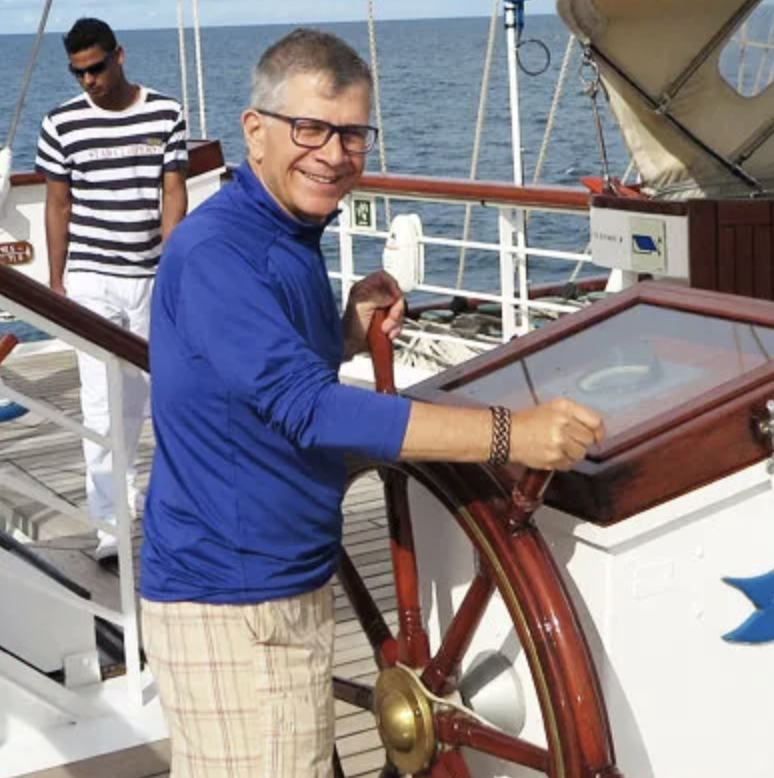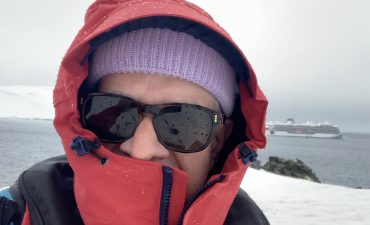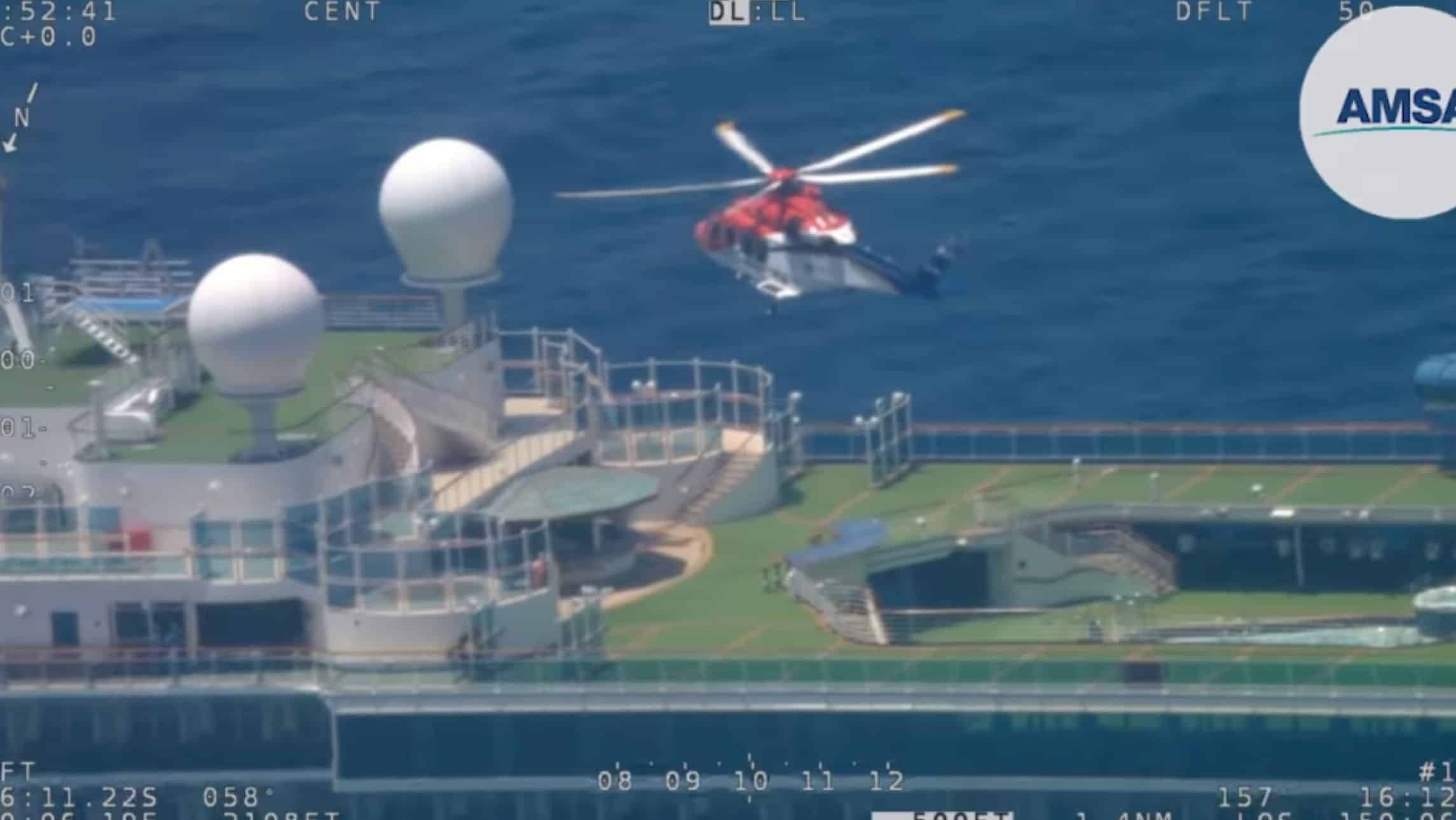By Peter Lynch, on board Viking Polaris in the Antarctic
Meet Ringo the submarine – and yes, just like the Beatles song, she is yellow. Hence the name.
They say more men have gone to the Moon than have dived to the bottom of the seas of Antarctica. But all that is about to change.
Ringo has a brother – George – and they operate off the brand-new expedition ship Viking Polaris. Paul and John are on the Viking Octantis, her sister, which is also in Antarctica right now.
This week, guests on Scenic’s discovery yacht Scenic Eclipse were involved in a submarine drama when a wave and ice meant they had to be taken off the submersible. All is safe, but it highlighted how these new ways to see the White Continent are becoming increasingly popular.
They are the new US$5 million toy that changes guest experiences and perspectives. So what’s it like to go down under the freezing waves of Antarctica – and how much skill and training is involved in piloting them?

Cruise Passenger went down in Ringo during an Antarctic cruise with Viking and found the whole experience exciting and fascinating.
Safety was front and centre. Even before the dive, we were weighed to make sure the three passengers on either side of the sub’s thick acrylic viewing bubble were balanced. And we attended a safety lecture at the start of the cruise with the warning: if you don’t attend, you don’t go down.
You can join us on the dive here:
Before we were taken to the sub in a Zodiac, we donned booties and lifejackets. And before we submerged, our pilot, 2nd officer (submersible) Daniel Petersson, went through an aircraft-like safety briefing and finally asked if anyone had changed their minds. No-one had.
The briefing included what to do if the pilot become unconscious and how the sub could be made to automatically float for the surface.
Once ready, Daniel filled tanks that sent us an amazing 100 metres to the sea bed, where guests could witness fish, plankton, and plant life. Some were able to see penguins swimming by.
As we returned to the surface we again got a briefing on how to leave the submersible. A special motor launch is on standby for rescue throughout the dive and Daniel relayed every move he made by radio to the surface vessel.
Our Zodiac crew were waiting to assist us out of the sub and back to the ship.
Perhaps the best part was sitting in Expedition Centre with Dr Daniel Moore, the Polaris chief scientist, who identified everything we had seen from our pictures.
I was particularly proud of a fish I had spotted – sadly, though, only its fins and body could be seen in my pictures. Dr Moore was still able to pick it as an icefish of the Channichthyidae family.
Ringo and brother George are proving very popular, and while George did need some maintenance during the cruise – passengers had their dive cut short – we were extremely impressed with the safety.

Daniel told us he had trained for 25 days and had a further five days of rescue training to qualify for the position, and he was already a ships officer.
The submarines have six-centimetre thick acrylic viewing domes, weigh in at 11 tons and can support life for 96 hours. There is even a worldwide rescue guarantee by the company that builds them to order, Uboat Workx in Holland.
Viking Polaris is one of several new vessels with an exciting array of “toys” in a hangar where maintenance engineers and crew are constantly checking and rechecking equipment.

Along with the two submarines, which occupy their own special place in the hangar, you can see two other stars of this ship: US$2.1 million Finnish Army speed vessels known as Special Operations Boats.
Made to be dropped from helicopters carrying troops on secret operations, they are powered by two jet engines and can reach speeds of 50 knots.
Again, safety procedures are strict with passengers strapped to special hydraulic seats to absorb any waves. Captains must attain the same qualifications as the officers on the bridge of the Polaris itself to pilot them.
A special hydraulic slipway allows passengers with mobility issues to board these vessels while they are in the hangar, and they can be driven back up a ramp at the end of the journey.
Viking Polaris also carries 17 military-grade Zodiacs with powerful outboards specially fitted to filter out any pollutants, 12 kayaks.
And when the ships’ 20-strong expedition team go out onto the ice, they bring with them special survival packs containing tents, cooking stoves and food packs including lasagne just in case a party gets stranded.
When you step on board Viking Polaris, you receive a whole array of gear to wear so you will be warm, dry, and safe on the ice.
We were given special heavy-weight boots, waterproof trousers, a down jacked and a waterproof topcoat in fetching Viking red.
Underneath, we wore long jobs and special heat-tech vests, ski gloves and a neck gaiter to keep those chilly winds out.
The ship is festooned with pictures of explorers from yesterday. It’s fascinating to see how simple the gear compares.











